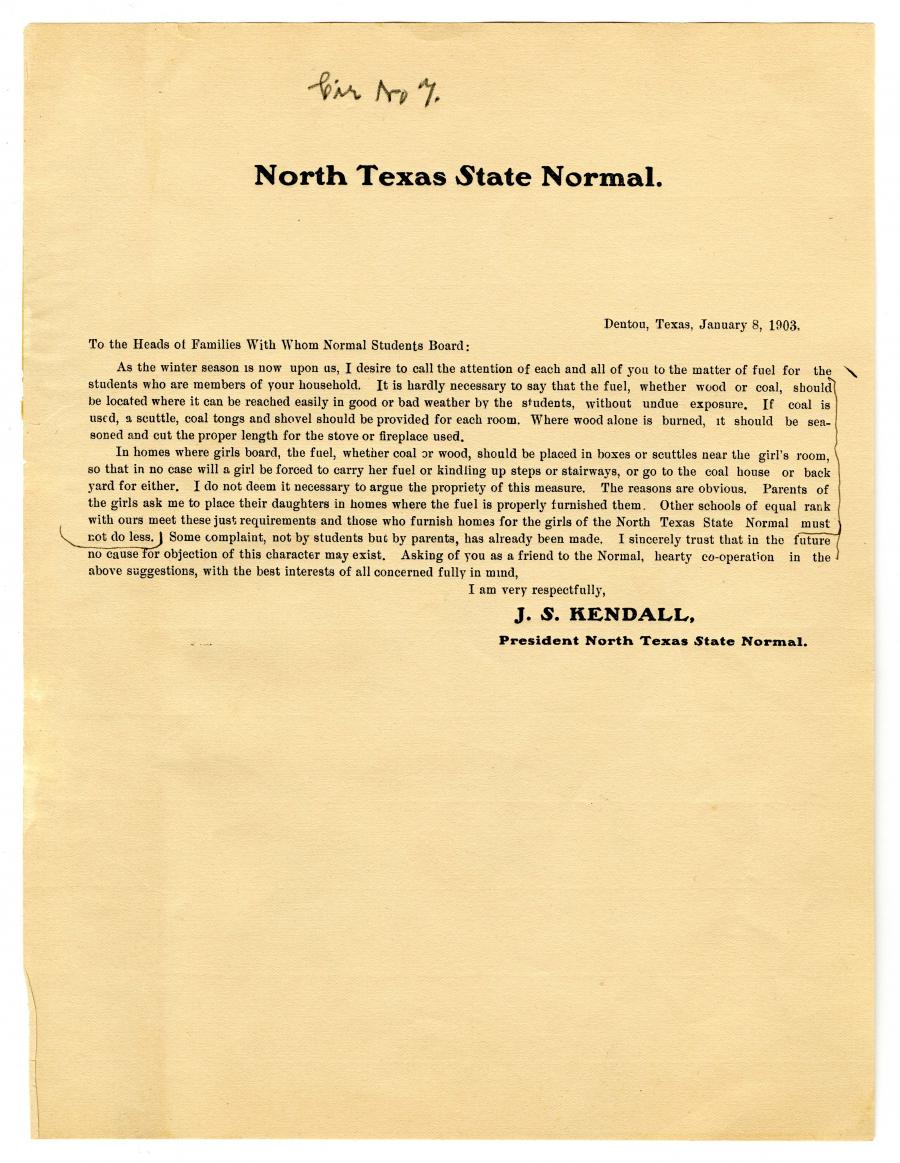Freshman Parade
The Freshman Parade was held in conjunction with freshman day on the North Texas campus in the 1920s. Among the day’s activities were athletic contests between the Fish (freshmen) and the upper classmen, student and faculty speeches, and a movie presentation at night. Seen here are freshmen in cars decorated and prepared to parade down Avenue A to Hickory Street, from Hickory to the Denton Square, and from the Square to return to campus by Oak Street.
Class Rings
Students have long commemorated their graduation with the purchase of a class ring. The design has evolved over the years, from a simple star with the school’s initials to rings with colored stones and personalized details.
Stereoscope with Picture of Two Students in Campus Scene, c. 1930
When viewed through a stereoscope, two nearly identical images taken from slightly different angles appear three-dimensional. Seen here is an early campus scene, featuring two students at a water fountain on the North Texas campus.
Housing
Early students lived either with local families or in boarding houses. In the early 1900s students paid between ten and fourteen dollars per month for such accommodations. In 1903, President Kendall sent out a number of memos concerning living conditions of the Normal Students, including these from January focusing on firewood and sanitation procedures.
North Texas Pennants
Students decorated their rooms with pennants designed to celebrate the school, their academic year, or their home county. These pennants were sometimes done in school colors; however, this was not done as a rule, as can be seen here in the Tarrant County pennant.
Student Handbook, 1926-27
Student handbooks were a popular way of passing important information on to new students. The guides contained information about rules, regulations, all college social events, organizations, student publications, approved boarding houses, the library, athletics, and common songs students should be familiar with, plus a map of campus.
Student Activities
Students were encouraged to take part in extracurricular activities, such as the Kendall-Bruce Literary Society, the Mary Arden Club, and the yearbook. In the early days of the college, however, students were limited in the number of activities they were allowed to take part in based on a point system, with a maximum of 20 points allowed. Certain activities considered more intensive, such as holding an editorship, were worth more points than other activities. A student could choose to divide their points among just a few large activities or among many smaller ones.

